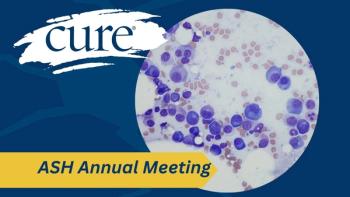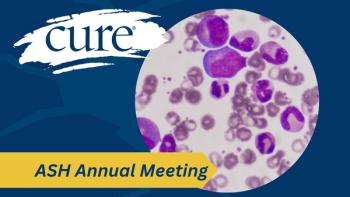
Hairy Cell Leukemia: A Poor Response to Therapy
Transcript:
Robert J. Kreitman, M.D.: What was it like then going to another treatment? First of all, how long did it take to realize that even with the rituximab plus the pentostatin, that wasn’t going to hold you?
Vince Fazio: Well, I think it was about six months afterward, and I got hyper focused on white cell counts. I would go to my hematologist. I’d ask him, what’s my white cell count? And I noticed it wasn’t recovering, and it was actually going back down. That’s when I had the conversation with my hematologist to say, “Can we do something other than what you have been doing, because it doesn’t seem to be working?”
Robert J. Kreitman, M.D.: How many years was it after the pentostatin/rituximab that you needed more treatment?
Vince Fazio: It was about a couple of years.
Robert J. Kreitman, M.D.: A couple of years.
Vince Fazio: Like I said, it was getting into a pattern of every two or two-and-a-half years I would need to have treatment again because my white cells were taking a dive.
Robert J. Kreitman, M.D.: One of the things we find is that when we add rituximab to a purine analog like cladribine or pentostatin, it makes the purine analog work much better. And there are many investigators who have combined rituximab and purine analog chemotherapy for hairy cell leukemia. And they have also found similar things, that you can get complete remission in a high frequency, and also it tends to last a lot longer.
There’s an entity called minimal residual disease in hairy cell leukemia, which are leftover hairy cells that can only be detected by special tests. There are monoclonal antibody tests that you could do — flow cytometry, immunohistochemistry of the bone marrow — highly technical tests that can detect these traces of hairy cells, which we call minimal residual disease, MRD. And if you don’t get rid of them, if you don’t get rid of the MRD, we believe that it can grow back into a relapse, into hairy cell leukemia that needs more treatment.
So usually we find that even though patients are being treated another time with purine analog chemotherapy, if it’s combined with rituximab, that remission should last a lot longer than even their previous treatment. What we see is that if patients get the same purine analog again, their remission is going to last less long, and maybe they won’t have a remission, or the remission won’t be as complete. But it sounds like, from your experience, the remission after pentostatin/rituximab really didn’t last any longer than the previous chemotherapy.
Vince Fazio: No, it didn’t, it did not.
Robert J. Kreitman, M.D.: OK. And so, that led you to the NIH [National Institutes of Health], is that right?
Vince Fazio: Yes, that’s the conversation I mentioned that I had with my hematologist, to ask him to look for some other way to get rid of the hairy cell or get better control of the hairy cell than having to do the 2CDA [cladribine] every two years. And that’s where my hematologist found you.
Transcript Edited for Clarity




